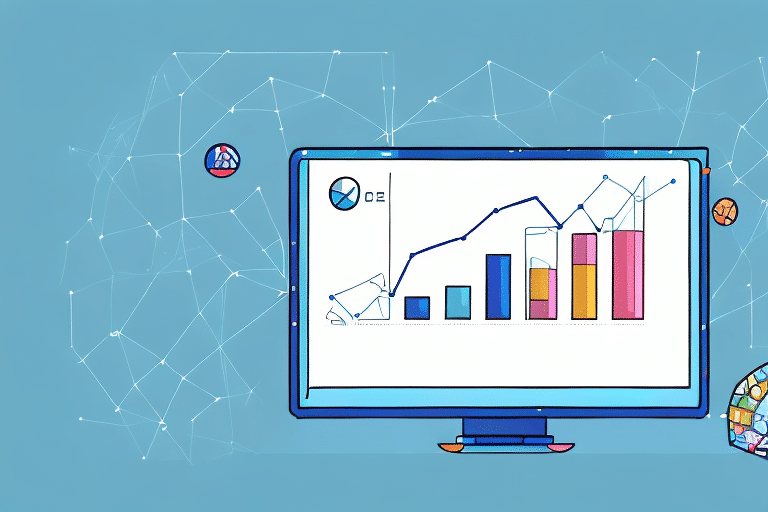How to Use Data to Optimize Ecommerce Operations for Growth
In today's fast-paced ecommerce market, businesses must swiftly adapt to changing conditions to stay competitive. Leveraging data analytics to optimize operations is one of the most effective strategies for achieving sustainable growth. This comprehensive guide explores the critical role of data in ecommerce, key metrics to track, essential analytics tools, and strategies to enhance various aspects of your business using data-driven insights.
Understanding the Importance of Data in Ecommerce Operations
Data is the cornerstone of every successful ecommerce business. From sales figures to customer behavior, high-quality data informs decision-making and drives growth. With access to comprehensive data, businesses can gain deeper insights into their operations, identify areas for improvement, and make informed strategic decisions. Additionally, data serves as the foundation for predictive analytics, enabling businesses to forecast demand and plan for seasonal fluctuations.
One significant advantage of data in ecommerce is the ability to personalize the customer experience. By analyzing customer data, businesses can understand preferences, behaviors, and purchase histories, allowing for targeted marketing campaigns, personalized product recommendations, and enhanced customer service. This personalization not only improves the customer experience but also increases loyalty and retention rates.
Moreover, data plays a critical role in supply chain management. Tracking inventory levels, shipping times, and delivery performance allows businesses to optimize their supply chains, ensuring timely product delivery and reducing operational costs.
Key Metrics to Track for Ecommerce Growth
Tracking the right metrics is essential for optimizing ecommerce operations. Key performance indicators (KPIs) to monitor include:
- Conversion Rate: Measures the percentage of visitors who complete a desired action, such as making a purchase.
- Average Order Value (AOV): Calculates the average amount spent each time a customer places an order.
- Customer Lifetime Value (CLV): Estimates the total revenue a business can expect from a single customer account.
- Traffic Sources: Identifies where website visitors are coming from, such as search engines, social media, or direct visits.
- Bounce Rate: Measures the percentage of visitors who leave the site after viewing only one page.
- Time Spent on Site: Tracks how long visitors stay on the website, indicating engagement levels.
Additionally, tracking the cart abandonment rate is crucial. This metric shows the percentage of customers who add items to their cart but do not complete the purchase. By analyzing the reasons behind cart abandonment, businesses can optimize the checkout process or offer incentives to encourage completed purchases. Another vital metric is the customer retention rate, which measures the percentage of customers who make repeat purchases, contributing to sustained revenue growth.
Analytics Tools for Collecting and Analyzing Data
Effective data collection and analysis are facilitated by various analytics tools. Some of the most popular tools include:
Google Analytics
Google Analytics is a fundamental tool for measuring website traffic and tracking user behavior. It provides insights into visitor demographics, traffic sources, and conversion rates, enabling businesses to understand how users interact with their site.
Mixpanel
Mixpanel offers advanced analytics capabilities, including cohort analysis, funnel analysis, and A/B testing. These features help businesses delve deeper into user behaviors and optimize their strategies accordingly.
Kissmetrics
Kissmetrics specializes in customer analytics, providing detailed information on customer acquisition, retention, and lifetime value. This tool is invaluable for businesses looking to refine their marketing and customer engagement strategies.
While analytics tools offer powerful insights, it's essential to understand what data to collect and how to interpret it. Combining technical expertise with business acumen ensures that data-driven decisions effectively enhance ecommerce operations. Additionally, businesses must prioritize data privacy and comply with regulations such as GDPR and CCPA to protect customer information.
Strategies to Optimize Ecommerce Operations with Data
Inventory Management
Effective inventory management is critical for reducing costs and ensuring product availability. Strategies include:
- Demand Forecasting: Using historical sales data to predict future demand and adjust inventory levels accordingly.
- Just-In-Time (JIT) Inventory: Ordering inventory only as needed to minimize storage costs and reduce waste.
- Supply Chain Optimization: Collaborating closely with suppliers to ensure timely delivery and appropriate inventory levels.
Customer Experience Enhancement
Improving the customer experience leads to higher satisfaction and loyalty. Key strategies involve:
- Personalized Marketing: Utilizing customer data to create targeted marketing campaigns and personalized product recommendations.
- Optimized Checkout Process: Streamlining the checkout to reduce cart abandonment and enhance user convenience.
- Responsive Customer Service: Using data insights to address common customer issues promptly and effectively.
Shipping and Fulfillment Optimization
Efficient shipping and fulfillment processes are essential for customer satisfaction and cost management. Strategies include:
- Carrier Selection: Analyzing shipping data to choose the most efficient and cost-effective carriers.
- Order Tracking: Implementing real-time tracking to monitor shipping performance and identify bottlenecks.
- Inventory Insights: Using inventory data to prevent stockouts and ensure popular products are readily available.
Continuous Improvement and Data-Driven Decision Making
Optimizing ecommerce operations is an ongoing process that requires continuous improvement based on data-driven insights. Key practices include:
- Regular Data Analysis: Consistently reviewing data to identify trends and areas for enhancement.
- Actionable Insights: Developing and implementing action plans based on data findings to improve operations.
- Overcoming Challenges: Utilizing data to address common ecommerce challenges such as inventory management, shipping delays, and customer service inefficiencies.
Best Practices for Securing Ecommerce Data and Privacy
With the increasing reliance on data, ensuring data security and privacy is paramount. Best practices include:
- SSL Encryption: Protecting data transmission between the website and users to prevent unauthorized access.
- Two-Factor Authentication (2FA): Adding an extra layer of security for user accounts and administrative access.
- Secure Payment Gateways: Utilizing trusted payment processors to safeguard financial information.
- Data Security Plans: Establishing protocols to respond effectively in the event of a data breach.
Compliance with regulations such as GDPR and CCPA is also essential to protect customer data and maintain trust.
Future Trends in Ecommerce Operations and the Role of Data Analytics
The future of ecommerce is closely intertwined with advancements in data analytics. Emerging trends include:
- Artificial Intelligence (AI) and Machine Learning: Automating and optimizing operations through predictive analytics and personalized experiences.
- Voice Search and Virtual Assistants: Enhancing user interactions and improving search capabilities with voice-activated technologies.
- Mobile Commerce: Growing reliance on mobile devices for shopping, necessitating mobile-optimized experiences and data strategies.
Staying ahead of these trends by leveraging data analytics will enable ecommerce businesses to adapt to evolving market conditions and continue driving growth.
Case Studies: Successful Ecommerce Businesses Using Data to Drive Growth
Several ecommerce giants have successfully harnessed data to fuel their growth:
Amazon
Amazon utilizes data analytics to provide personalized product recommendations, optimize its supply chain, and enhance customer service. By analyzing vast amounts of customer data, Amazon ensures a tailored shopping experience that drives sales and customer loyalty.
Shopify
Shopify offers advanced analytics capabilities that help businesses monitor performance, understand customer behaviors, and optimize their operations. These tools empower merchants to make data-driven decisions that enhance their ecommerce strategies.
Studying these successful businesses provides valuable insights into best practices for leveraging data to achieve ecommerce growth.




















